The Majestic Ostrich: Africa’s Enduring Giant of the Plains
Among the vast and diverse tapestry of Earth’s avian life, few creatures command attention quite like the Ostrich. Towering, swift, and undeniably charismatic, this magnificent bird is far more than just a spectacle of nature. It is a master of survival, an ecological engineer, and a creature deeply intertwined with both the ancient past and the modern world. From its evolutionary lineage stretching back millions of years to its crucial role in African ecosystems and its complex relationship with humanity, the Ostrich offers a captivating study for anyone fascinated by the natural world. Prepare to embark on a journey into the life of the world’s largest bird, uncovering its secrets, its challenges, and its enduring appeal.
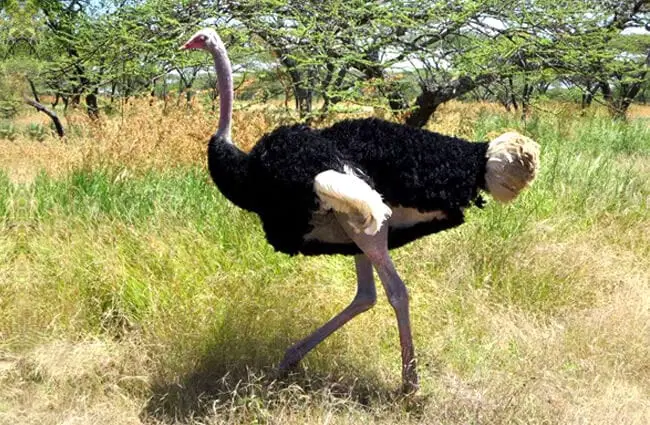
Unveiling the Ostrich: Basic Facts and Features
A Colossal Avian Marvel
The Ostrich, scientifically known as Struthio camelus, stands as the undisputed heavyweight champion of the bird world. Reaching heights of up to 2.8 meters (9 feet) and weighing in at a formidable 150 kilograms (330 pounds), these flightless giants possess an imposing physique. Their long, powerful legs, each ending in two toes (a unique adaptation among birds), are built for speed and defense. While their wings are too small for flight, they are not without purpose, used for balance during high-speed runs, for courtship displays, and to shade their chicks. The males are easily distinguished by their striking black plumage with white primary feathers and tail, while females and juveniles sport a more subdued greyish-brown. Their long, bare necks and small heads are topped with large, expressive eyes, often described as the largest of any land animal.

Where the Wild Things Are: Ostrich Habitat
Native to the savannas and semi-arid regions of Africa, the Ostrich thrives in open, expansive landscapes. Their historical range once spanned much of Africa and parts of the Middle East, though today wild populations are primarily concentrated in sub-Saharan Africa. These adaptable birds prefer environments characterized by short grasses, scattered shrubs, and trees, which provide both food and cover. They are particularly well-suited to dry conditions, capable of going for extended periods without drinking water, instead obtaining sufficient moisture from the plants they consume. This resilience allows them to inhabit areas where other large animals might struggle, making them a quintessential symbol of the African wilderness.
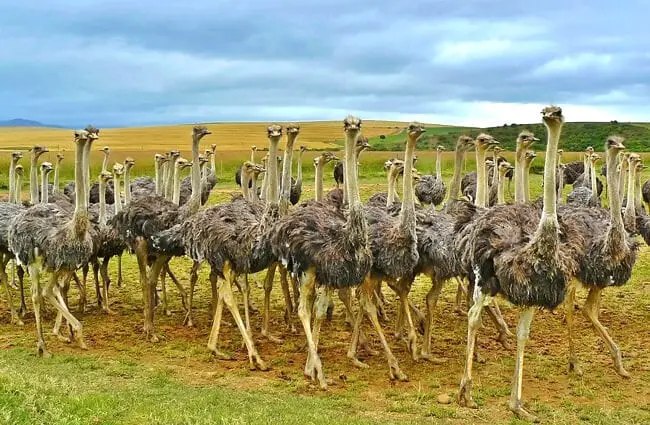
The Ostrich’s Menu: What’s for Dinner?
Ostriches are primarily herbivores, with their diet consisting mainly of grasses, flowers, seeds, and fruits. However, they are opportunistic feeders and will supplement their plant-based meals with insects, lizards, and even small rodents when available, making them omnivores. Their long necks allow them to browse on vegetation that is out of reach for many other grazers. Lacking teeth, Ostriches swallow their food whole. To aid digestion, they ingest small stones and pebbles, known as gastroliths, which grind down tough plant material in their gizzard. This efficient digestive system enables them to extract maximum nutrients from their often-fibrous diet, a crucial adaptation for survival in their natural habitat.
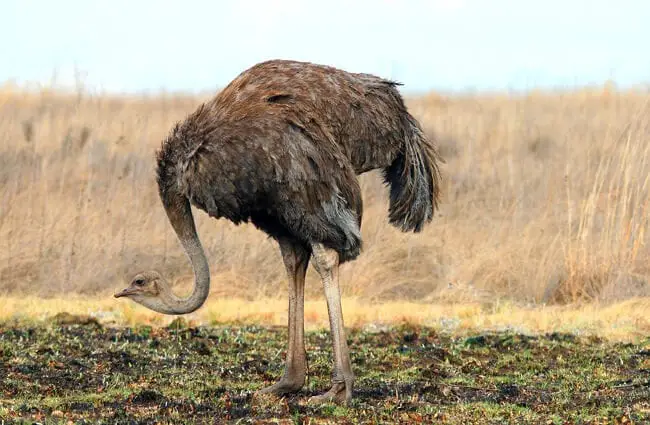
Life in the Fast Lane: Ostrich Behavior and Ecology
Social Dynamics and Daily Rhythms
Ostriches are social animals, typically living in nomadic groups ranging from 5 to 50 individuals. These groups often associate with other grazing animals like zebras and antelopes, forming mixed-species herds. This cooperative arrangement offers mutual benefits: the Ostrich’s superior eyesight and height allow it to spot predators from afar, while the keen hearing of mammals provides an additional layer of security. Ostriches are diurnal, meaning they are active during the day, spending their hours foraging, dust bathing, and resting. Their social structure is generally hierarchical, with a dominant male and a primary female leading the group, especially during breeding season.
Love and Legacy: Mating and Reproduction
The Ostrich breeding season typically occurs between March and September. During this time, males engage in elaborate courtship displays, involving dancing, wing flapping, and vocalizations to attract females. A dominant male will establish a territory and mate with a primary female, but he may also mate with several secondary females. A fascinating aspect of Ostrich reproduction is their communal nesting behavior. The primary female lays her eggs in a shared nest, a shallow depression scraped into the ground, and secondary females also deposit their eggs there. A single nest can contain 15 to 60 eggs, each weighing up to 1.4 kilograms (3 pounds) and measuring about 15 centimeters (6 inches) in diameter, making them the largest eggs of any living bird. The primary female takes on the majority of incubation duties during the day, blending seamlessly with the sandy environment, while the male incubates at night, his dark plumage providing camouflage against the darkness. Incubation lasts approximately 35 to 45 days. Once hatched, the precocial chicks are covered in down and can walk within hours, quickly learning to forage under the watchful eyes of both parents.
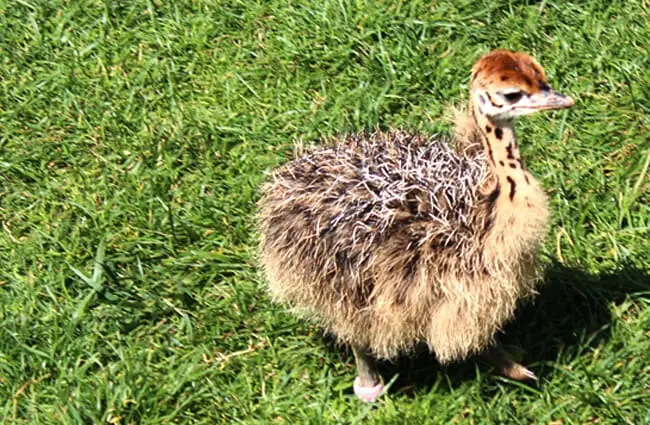
Giants of the Ecosystem: Their Role in Nature
Ostriches play a significant role in their native ecosystems. As large grazers and browsers, they influence plant communities by consuming vast quantities of vegetation, which can help prevent overgrowth and promote new plant growth. Their movement across the landscape also aids in seed dispersal, contributing to the regeneration of flora. However, their size and open-habitat preference also make them a target for large predators such as lions, cheetahs, leopards, and hyenas. While adult Ostriches can defend themselves with powerful kicks, their eggs and young chicks are particularly vulnerable to a wider range of predators, including jackals, vultures, and even large birds of prey. This predator-prey dynamic is a vital component of the savanna food web, maintaining ecological balance.
A Journey Through Time: The Ostrich’s Evolutionary Tale
The Ostrich belongs to a group of flightless birds known as ratites, which also includes emus, rheas, cassowaries, and kiwis. This ancient lineage suggests a common ancestor that lived tens of millions of years ago, likely on the supercontinent of Gondwana. The Ostrich’s ancestors adapted to life on open plains, where the ability to run at incredible speeds became a more advantageous survival strategy than flight. Over millennia, their wings gradually reduced in size, while their legs became exceptionally long and muscular, perfectly engineered for powerful strides. Fossil evidence indicates that Ostrich-like birds have roamed Africa for at least 20 million years, showcasing a remarkable evolutionary success story of adaptation to a challenging environment.
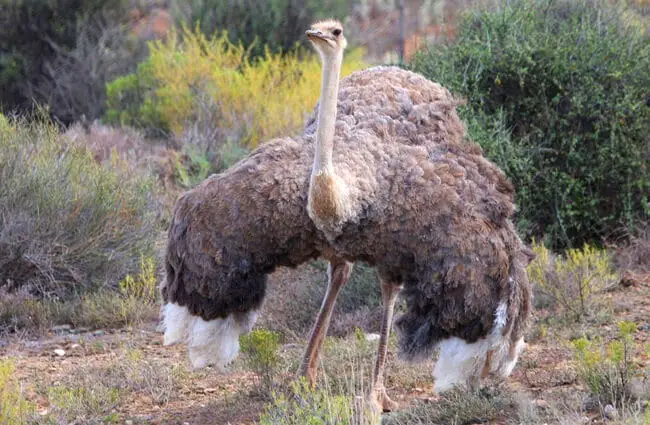
Ostrich and Humanity: A Shared History
Cultural Significance and Human Interaction
For thousands of years, Ostriches have held a prominent place in human culture and economy. Ancient civilizations, from Egyptians to Romans, prized their magnificent feathers for adornment, fashion, and ceremonial purposes. Ostrich eggs, known for their immense size and strength, have been used as food, water containers, and even carved into intricate artworks. In modern times, Ostrich farming has become a global industry, providing not only feathers but also lean, healthy meat, durable leather, and oil. Beyond their commercial value, Ostriches symbolize strength, speed, and fertility in various cultures, appearing in art, folklore, and even heraldry. Their unique appearance and behavior continue to captivate, making them a popular attraction in zoos and wildlife parks worldwide.
Encountering Ostriches in the Wild: A Guide for Adventurers
For the aspiring zoologist or dedicated animal lover, observing Ostriches in their natural habitat is an unforgettable experience. These birds are primarily found in the savannas and semi-deserts of sub-Saharan Africa. Key regions include the Serengeti in Tanzania, the Maasai Mara in Kenya, Etosha National Park in Namibia, and Kruger National Park in South Africa. The best times for viewing are typically during the cooler parts of the day, early morning or late afternoon, when they are most active. Look for them in open grasslands, often alongside other large herbivores. Their height makes them relatively easy to spot from a distance.
- For the Animal Lover: When planning a safari, inquire about areas known for Ostrich populations. Patience and binoculars are essential for observing their natural behaviors without disturbance. Always maintain a respectful distance to avoid stressing the animals.
- For the Hiker: While rare to encounter on foot in protected areas, if an Ostrich is sighted, it is crucial to exercise caution. Ostriches are generally shy, but if they feel threatened, they can be dangerous. Their powerful legs can deliver a kick strong enough to cause serious injury.
- What to do:
- Maintain a significant distance.
- Avoid sudden movements.
- If an Ostrich approaches or displays aggressive behavior (hissing, wing flapping, charging), slowly back away without turning your back.
- Seek cover behind a vehicle or sturdy object if possible.
- What to avoid:
- Never approach a nest or chicks, as parents are highly protective.
- Do not attempt to feed or provoke an Ostrich.
- Do not run directly away, as this can trigger a chase response.
- What to do:
The Ostrich in Captivity: A Zookeeper’s Perspective
Caring for Ostriches in a captive environment requires specialized knowledge and dedication to replicate their natural needs as closely as possible. Zookeepers play a vital role in ensuring the welfare of these magnificent birds.
- Dietary Management:
- A balanced diet is crucial, typically consisting of commercial Ostrich pellets supplemented with fresh alfalfa, grasses, and vegetables.
- Access to grit or small stones (gastroliths) must be provided to aid digestion.
- Clean, fresh water should always be available.
- Avoid overfeeding, as obesity can lead to health issues.
- Enclosure Design:
- Ostriches require large, open enclosures with plenty of space for running and exercise, mimicking their natural savanna habitat.
- The ground substrate should be well-drained, preferably sandy or grassy, to prevent foot problems.
- Shelter from extreme weather conditions (sun, wind, rain) is essential.
- Fencing must be robust and high enough to prevent escapes and protect from external threats.
- Social Grouping:
- Ostriches are social, so housing them in appropriate groups (e.g., a dominant male with a few females, or bachelor groups) is important for their psychological well-being.
- Careful introduction of new individuals is necessary to avoid aggression.
- Health and Welfare:
- Regular veterinary checks are vital for monitoring overall health.
- Common health concerns include leg and foot injuries, digestive issues, and parasitic infections.
- Enrichment activities, such as providing new foraging opportunities or objects to investigate, help prevent boredom and encourage natural behaviors.
- Handling and Safety:
- Due to their size and powerful kicks, Ostriches can be dangerous. Zookeepers must be trained in safe handling techniques and always prioritize their own safety.
- Use of barriers and careful planning are essential during veterinary procedures or enclosure maintenance.
Beyond the Basics: Fascinating Ostrich Facts
- Speed Demons: Ostriches are the fastest birds on land, capable of reaching speeds of up to 70 kilometers per hour (43 mph) and sustaining speeds of 50 km/h (31 mph) for extended periods.
- Giant Eyes: Their eyes are the largest of any land animal, measuring about 5 centimeters (2 inches) in diameter, providing excellent long-distance vision.
- The “Head in Sand” Myth: The popular belief that Ostriches bury their heads in the sand is a myth. When threatened, they may lie down and stretch their long necks along the ground to blend in with the terrain. They also dig shallow nests in the sand for their eggs, which might have contributed to the misconception.
- Unique Digestion: Ostriches have three stomachs, allowing them to efficiently process tough fibrous plant material.
- Long Lifespan: In captivity, Ostriches can live for 50 to 70 years, though their lifespan in the wild is typically shorter, around 30 to 40 years.
- Subspecies Diversity: There are several recognized subspecies of Ostrich, each with slight variations in appearance and geographic range, such as the North African Ostrich, Somali Ostrich, Maasai Ostrich, and Southern Ostrich.
Conclusion: The Enduring Allure of the Ostrich
The Ostrich stands as a testament to the power of adaptation and the beauty of specialized evolution. From its towering presence on the African plains to its intricate social behaviors and vital ecological contributions, this flightless giant continues to inspire awe and curiosity. Understanding the Ostrich not only enriches our appreciation for biodiversity but also underscores the importance of conservation efforts to protect these magnificent birds and their habitats for future generations. Whether observed in the wild, studied in a classroom, or cared for in a zoological park, the Ostrich offers endless lessons about resilience, survival, and the wonders of the natural world.

![Red Angus Closeup of a beautiful Red Angus cowPhoto by: U.S. Department of Agriculture [pubic domain]https://creativecommons.org/licenses/by/2.0/](https://animals.net/wp-content/uploads/2020/03/Red-Angus-4-238x178.jpg)




![Red Angus Closeup of a beautiful Red Angus cowPhoto by: U.S. Department of Agriculture [pubic domain]https://creativecommons.org/licenses/by/2.0/](https://animals.net/wp-content/uploads/2020/03/Red-Angus-4-100x75.jpg)

